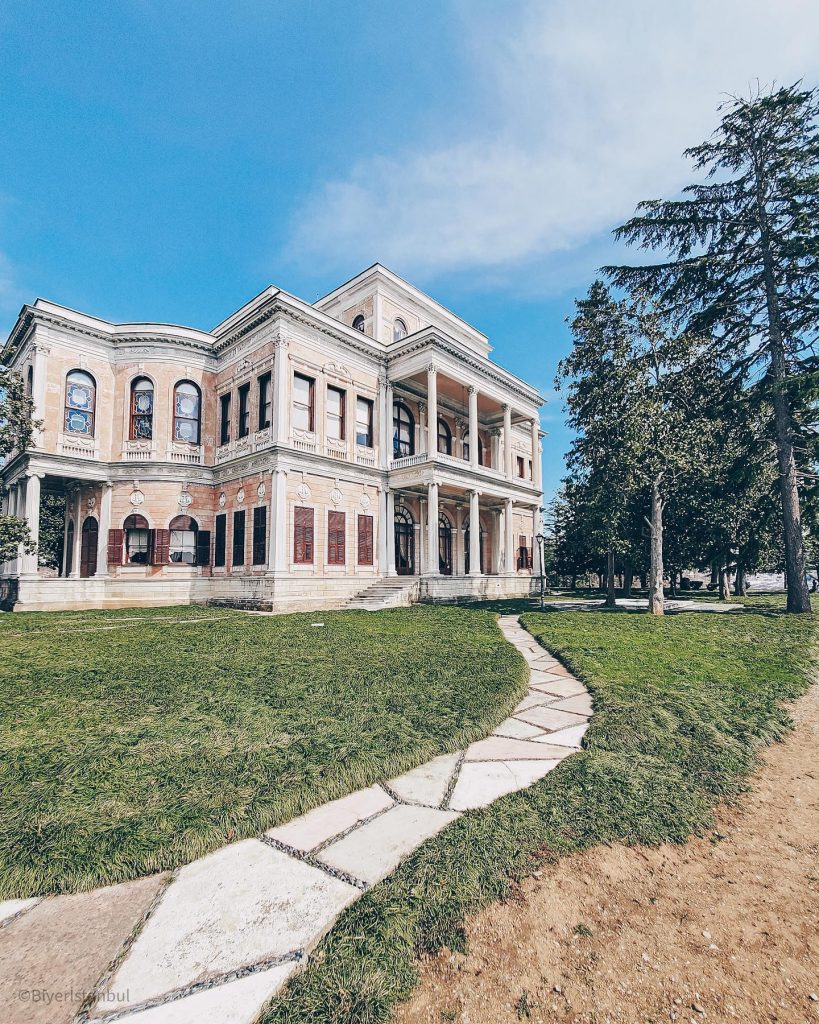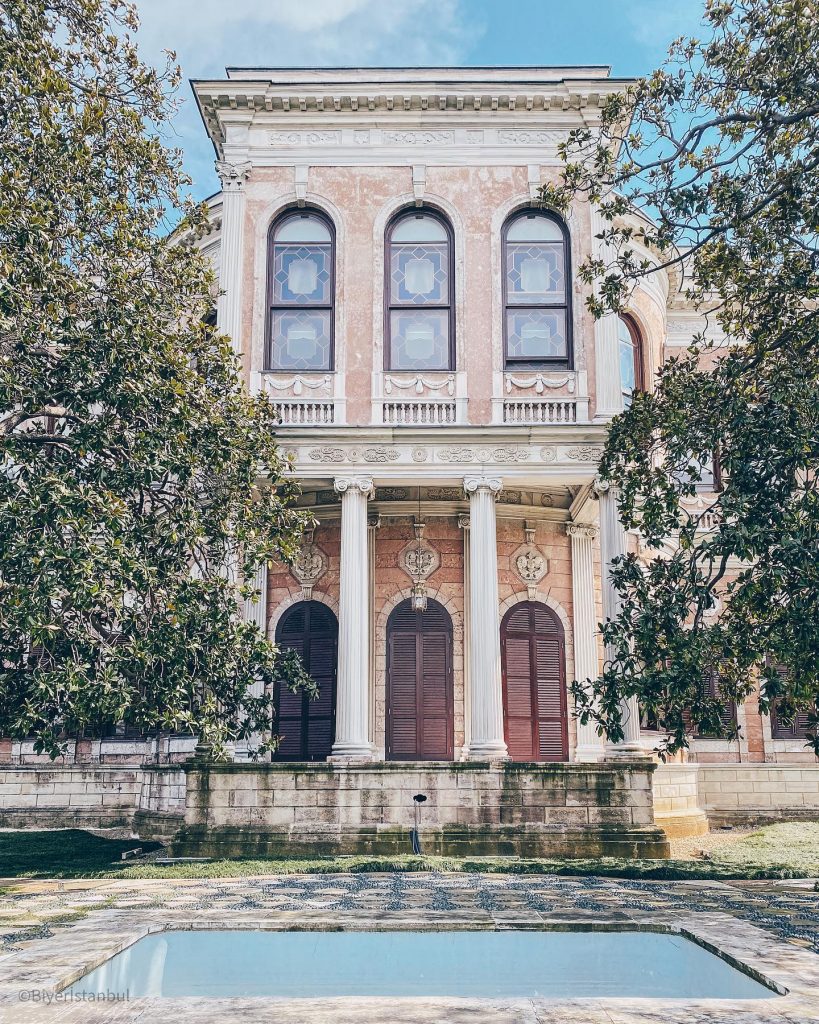Istanbul is known for being the impenetrable capital of the former Byzantine, Roman, and Ottoman Empires, and there is no better way to see their long-lasting impact than the Istanbul palaces across the city.
Bordering Europe and Asia, this historic city has been home to several leaders and Sultans, each making claim to this land and defending it with every tooth and nail.
While there are technically only five palaces in Istanbul, there are also small pavilions that serve a function to the royal family that are worth adding to any Istanbul itinerary.
We loved the palaces in the city so much that we’ve decided to write a dedicated article on it. Enjoy!
Best Palaces in Istanbul
Let’s begin by looking at the five main palaces in Istanbul; from the Ottoman residences of the Topkapi Palace, Beylerbeyi Palace, and the Dolmabahçe Palace to the summer houses and presidential palaces. These are the biggest and most beautiful palaces in the city.
1. Topkapi Palace
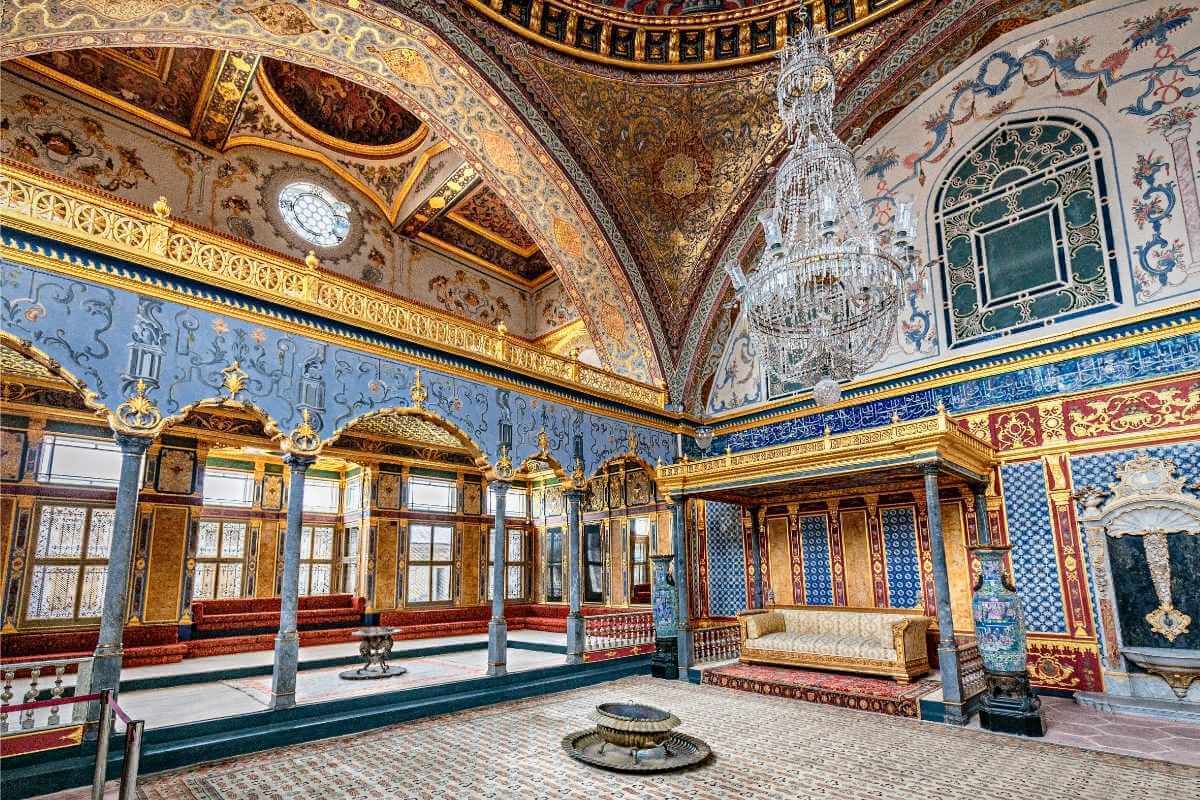
The Topkapi Palace is one of the largest palaces in Istanbul. It’s so big that it’s divided into 15 sections. The complex has four main courtyards and several smaller buildings, including a harem where female members of the family lived.
State officials and important government workers also lived in the palace complex, including the Grand Vizier.
The palace was built by the order of the Sultan Mehmed the Conqueror in 1459, just six years after capturing Constantinople. The palace served as the Ottoman Sultans’ residence and court during the 15th and 16th centuries.
Over the years, the palace has been renovated and expanded after it was damaged in an earthquake in 1509 and a fire in 1665.
After the Ottoman Empire ended in 1924, the palace was turned into a museum by the new Turkish Republic. The museum has a large collection of clothes, weapons, religious artifacts, and manuscripts.
Only a few important rooms are open to the public, including the Ottoman Imperial Harem and the treasury, where the Spoonmaker’s Diamond and the Topkapi Dagger are kept.
Since the 17th century, the Ottoman sultans have preferred to use the Dolmabahçe Palace as their residence, but Topkapı was still the city’s treasury. It was added to the UNESCO World Heritage Site list in 1985.
- Hours: 10am – 4pm, Wednesday – Monday (closed Tuesdays)
- Address: Cankurtaran, 34122 Fatih, İstanbul, Turkey
2. Dolmabahçe Palace
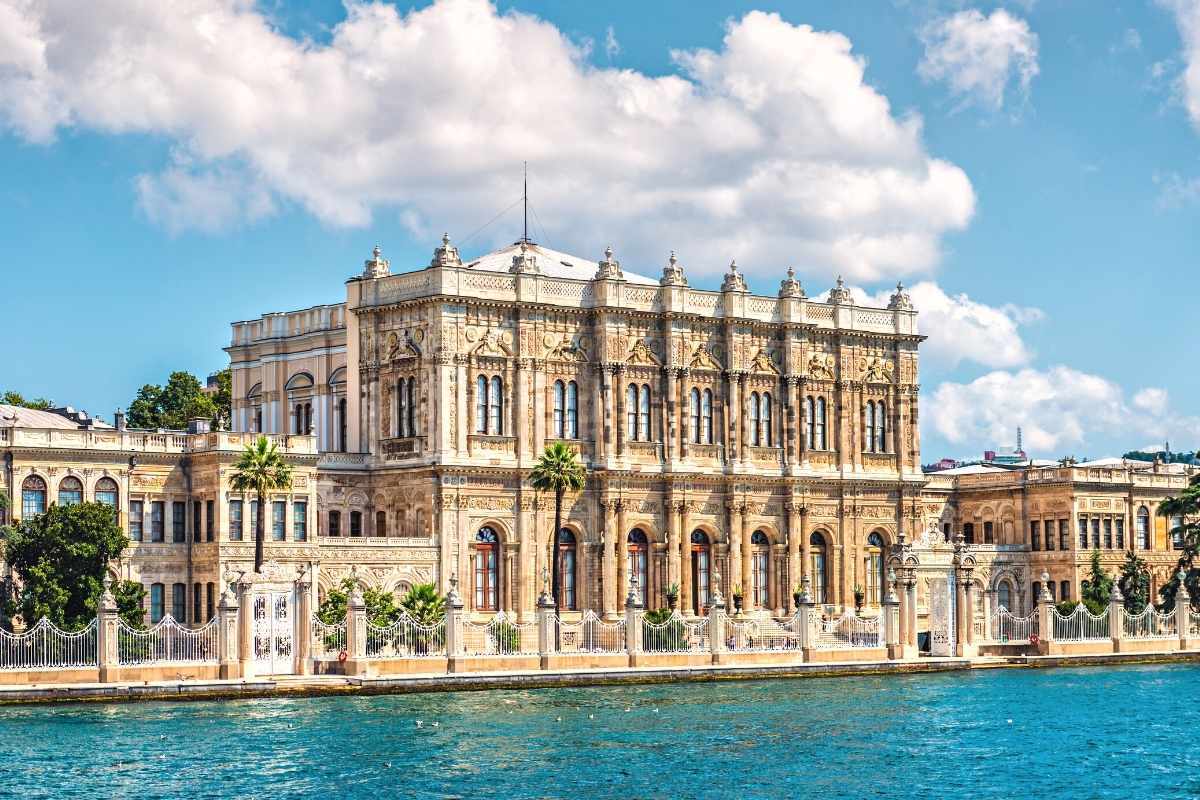
The Dolmabahce Palace is the largest, most expensive, and most intricately designed palace in Istanbul. Located on the European side of Istanbul in the Besiktas district, it was the main administrative center for the Ottoman Empire since the 19th century. Today, it is regarded as one of the top landmarks in Istanbul to visit.
Consisting of 285 rooms and 46 halls, the entirety of this palace is now open for tourists to visit. It is said that one of the largest Bohemian crystal chandeliers is kept in the palace, as well as the largest diamond.
The palace was fabricated using Baroque style architecture, with hints of Rococo, Neoclassical and traditional Ottoman styles.
It was designed by architect Garabet Balyan and is said to have cost the city five million Ottoman gold lira ($1.9 billion in 2021 value). This placed a huge financial burden on the city which lost a quarter of the yearly tax revenue because of it.
It was the family home of 6 sultans over the years. The last Sultan to live in the palace was Caliph Abdülmecid Efendi.
- Hours: 9am – 4pm, Tuesday – Sunday (closed Mondays)
- Address: Vişnezade, Dolmabahçe Cd, 34357 Beşiktaş, İstanbul, Turkey
3. Beylerbeyi Palace
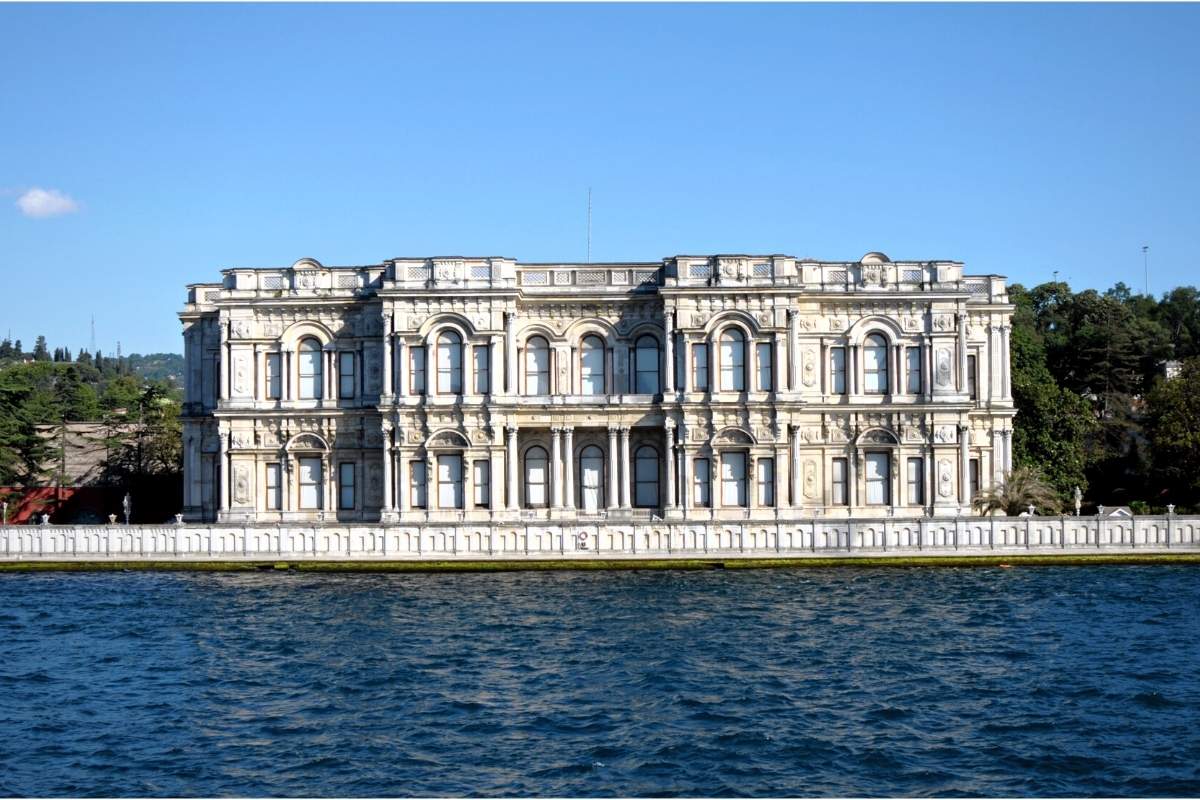
The Beylerbeyi Palace was the final palace to take residence from the royals since it was where Sultan Abdulmecid II was placed under house arrest.
Located on the Bosphorus Strait on the Asian side of Istanbul is the ornately decorated Beylerbeyi Palace.
It was commissioned by Sultan Abdülaziz in the middle of the 19th century as the Sultan’s summer residence, after the original palace, built by Sultan Mahmud, burned down.
It was a place where the sultan could entertain his foreign visitors, such as the Austrian Emperor Franz Joseph, Prince Nikola of Montenegro, the German Emperor Wilhelm II, and Empress Eugénie of France.
It was said that Eugénie loved the palace so much that she had a window recreated for her bedroom in Tuileries Palace that was inspired by the palace.
The palace is an architectural piece of beauty that spans over 70 acres. With its manicured gardens and ornamental decor throughout the interior, including the array of oil paintings and expensive crystal chandeliers, anyone visiting the Beylerbeyi Palace will be left in awe.
- Hours: 9am – 5pm, Tuesday – Sunday (closed Mondays)
- Address: Beylerbeyi, Beylerbeyi Kavşağı, 34676 Üsküdar, İstanbul, Turkey
4. Yildiz Palace
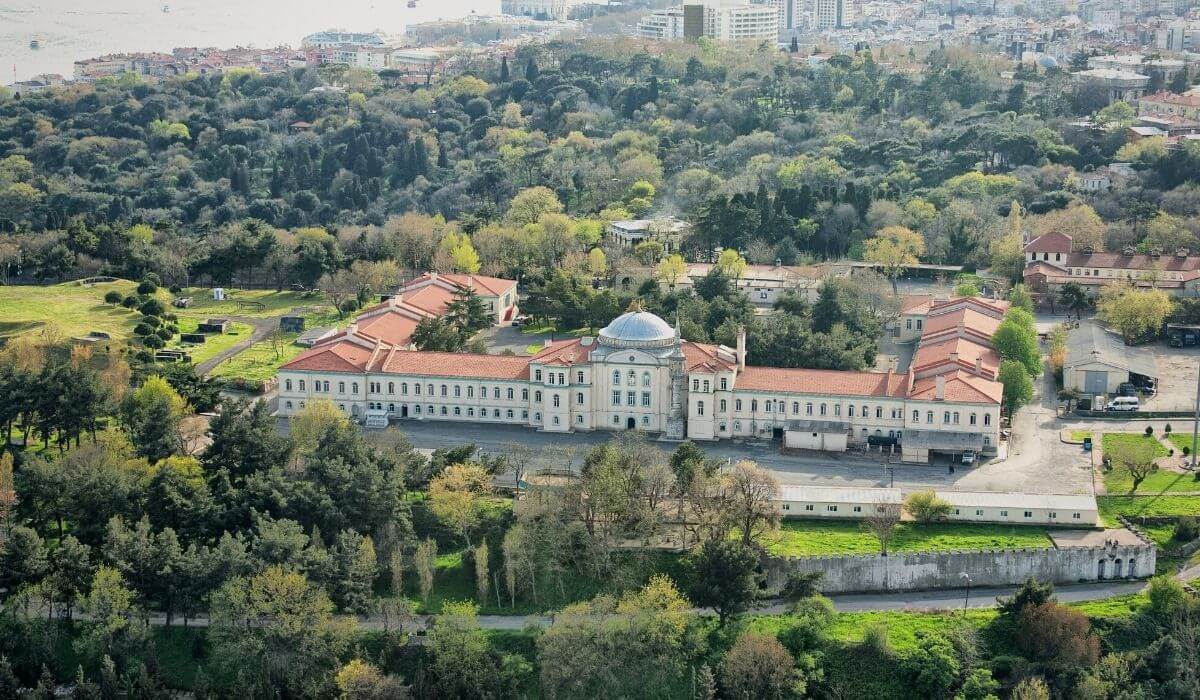
Yildiz Palace in Istanbul is the last palace to be built by the Ottoman sultans. It was built by Sultan Salim III for his mother after the Islamic conquest at the end of the 18th century.
The palace is located on top of a hill in Yildiz Park and it is said the construction took 12 years and was funded by financial loans.
The palace is made up of several different pavilions and villas, including a porcelain factory and an opera house.
The main building was sadly destroyed in 1910 in a fire and only the exterior walls remain of the original building. After the fire, it was reconstructed and the addition of a luxury hotel was added to the site.
The main building was often used as a casino, guest house, and museum before it was transformed into the main residence for the Turkish president.
- Hours: 9am – 5pm, Tuesday – Sunday (closed Mondays)
- Address: Yıldız, Yıldız Sarayı Müzesi, 34349 Beşiktaş, İstanbul, Turkey
5. Çırağan Palace

The Ciragan Palace was constructed in the 19th century under the rule of Sultan Abdulaziz. It was originally built as an Ottoman Palace but is now a five-star hotel. Facing the shores of the Bosphorus Straight between Beşiktaş and Ortaköy on the European side, it has stunning views of the water and beyond.
Though the palace was built for Sultan Abdulaziz, the 32nd Sultan of the Ottoman Empire, it was constructed by his sons Sarkis and Hagop Balyan and was designed by Armenian architect Nigoğayos Balyan.
The construction took four years (1863-1867) and was the last of the palaces in Istanbul to be built for a sultan, rather than using originally built palaces.
It was built using marble, where a marble bridge connects it to the beautiful Yildiz palace on the hill behind it. The interior of the palace took another five years to complete, having been completed in 1872.
Sadly, Sultan Abdulaziz did not live in the palace for long, as he was found dead in 1876 after he was dethroned.
His nephew, Sultan Murad V, took over as Sultan and moved into the Çırağan Palace. He only ruled for 93 days before he was replaced by his brother Abdul Hamid II because of an alleged mental illness.
Murad V lived in the palace under house arrest until his death on 29 August 1904.
Since then, the palace was used for meetings by parliament, but it was sadly destroyed in a fire in 1910. Only the outer walls remained intact.
The gardens were then used as a football field for the club Besiktas J.K, until 1987, when a Japanese company bought the palace and restored it, and added a modern and luxurious hotel to its complex. The hotel opened in 1990 and the restored palace building opened in 1992.
In 2007, the palace was renovated again to resemble the authentic baroque era style it would have had centuries ago.
- Hours: Museum is open daily, 9am – 4pm in Winter, 9am – 6pm in Summer
- Address: Yıldız, Çırağan Cd. No:32, 34349 Beşiktaş, İstanbul, Turkey
Best Pavilions in Istanbul
Pavilions are like mini palaces, or kiosks, that were built in the 19th century and used by the Sultans as a rest house for when they went hunting or to battle.
Today these stunning palaces have been renovated and turned into open public spaces, including some of the best Istanbul museums, restaurants, hotels, and parks.
Let’s take a look at the most famous ones…
6. Ihlamur Pavilion
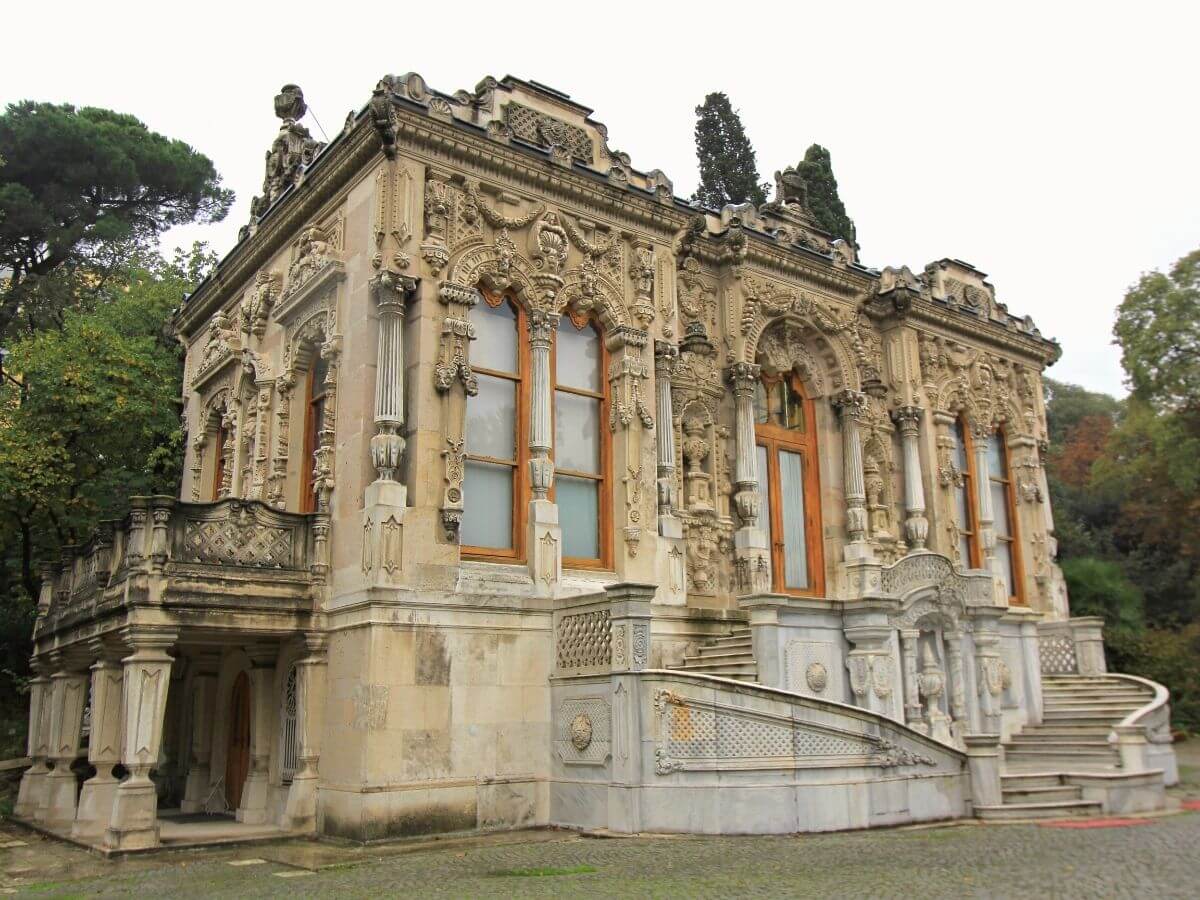
The Ihlamur Pavilion is a former Ottoman summer residence that was constructed during the reign of Sultan Abdülmecid I in 1839-1860. It was used for daily recreation by the Ottoman sultans and also as an office. The Ihlamur Pavilions consist of two main structures.
The first structure is the Ceremony Pavilion, where the Sultan hosts ceremonies, and the other, Retinue Pavilion, for his entourage and harem.
The construction boasts architectural features from the Neo-Baroque movement. The recreational area around the pavilion is known as Hacı Hüseyin Farms, which was later transformed into a royal garden with a wooden mansion to serve as the Sultan’s rest house.
In 1791, Sultan Selim III added several pools and buildings to the garden, which became an area of shooting and training for the sultans. Today, you can still see surviving target stones bearing the date and scores of the shots made by Sultans Selim III and Mahmud II.
- Hours: 9am – 5pm, Tuesday – Sunday (Closed on Mondays)
- Address: Teşvikiye, 34365 Şişli, İstanbul, Turkey
7. Küçüksu Pavilion
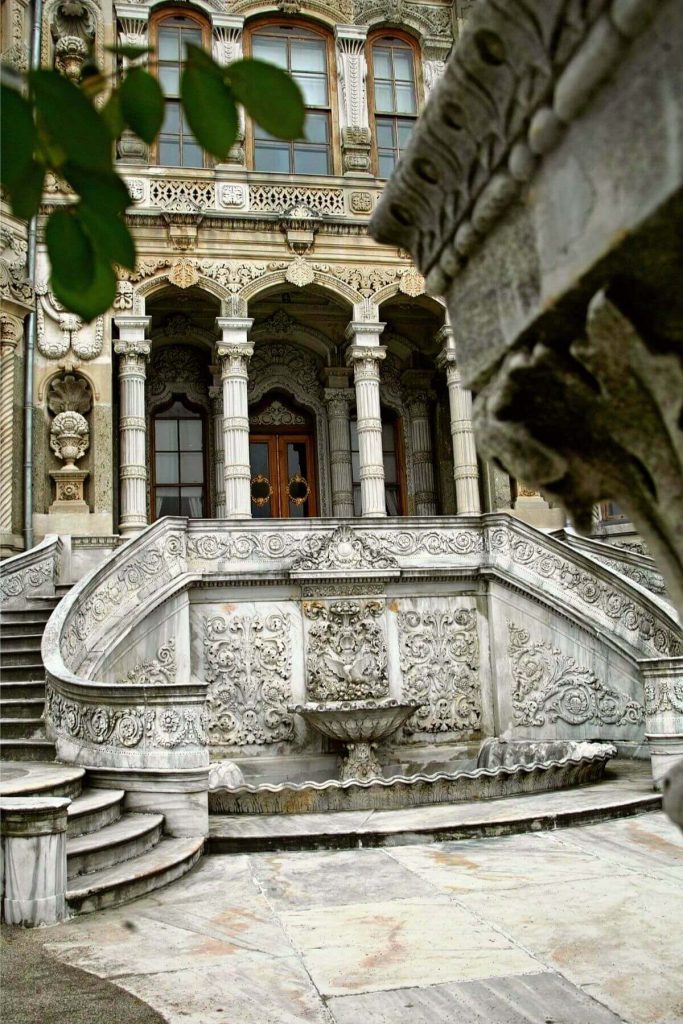
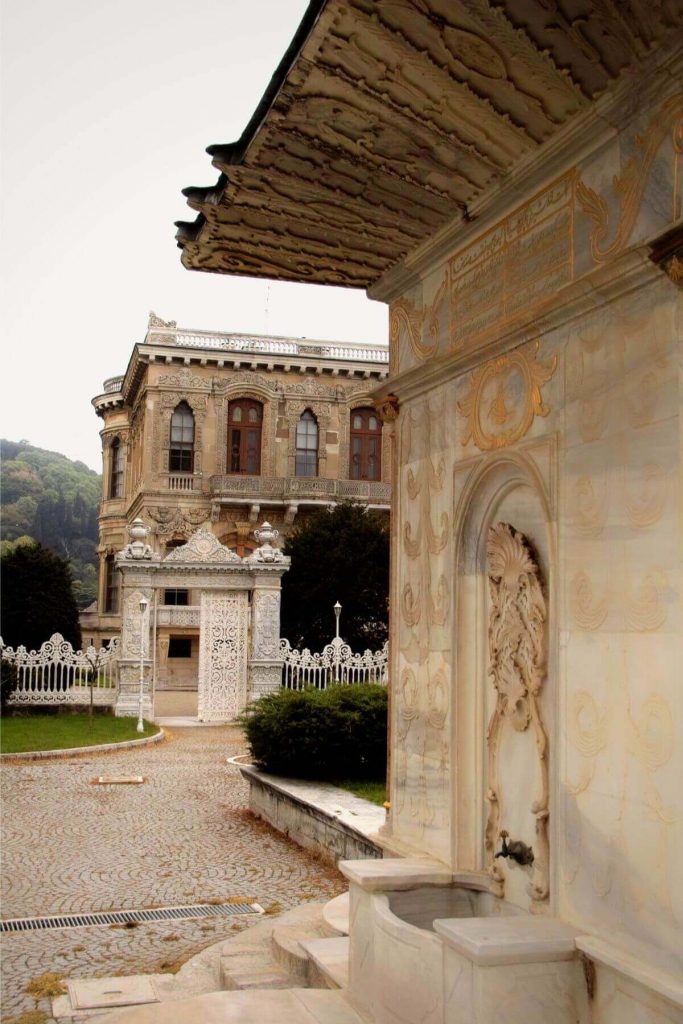
Located on the Asian side of Istanbul between Anadoluhisarı and the Fatih Sultan Mehmet Bridge, is the Kucuksu Pavilion.
It was commissioned by Sultan Abd-ul-Mejid I in 1823 and completed in 1857. The pavilion was built to be a summer house for the Ottoman sultans for short hunting getaways. It was designed by Garabet Amira Balyan and his son Nigoğayos Balyan using traditional neo-baroque architecture.
Kucuksu is also named Littlewater Pavilion or Göksu (Skywater) Pavilion, because of its location on the Bosphorus. The palace has two main stories and a basement, and unlike other pavilions, it has a garden surrounded by cast-iron railings.
The basement was where the kitchen, larder, and servant’s quarters were kept and the upper floors were decorated with traditional Turkish homely touches.
It was decorated with colorful Italian marble, crystal chandeliers from Bohemia, and woven upholstery from Hereke.
When Sultan Abd-ul-Aziz reigned, he added detailed decoration to the façade and some of the garden’s outbuildings were demolished.
In the early Republican period, the pavilion was used as a guesthouse for state officials. Today, the palace is open to the public as a museum.
It was also featured in the James Bond movie, “The World Is Not Enough” as the mansion of Elektra King.
- Hours: 9am – 5pm, Tuesday – Sunday (Closed on Mondays)
- Address: Göksu, Küçüksu Cd., 34810 Beykoz, İstanbul, Turkey
8. Aynalıkavak Pavilion
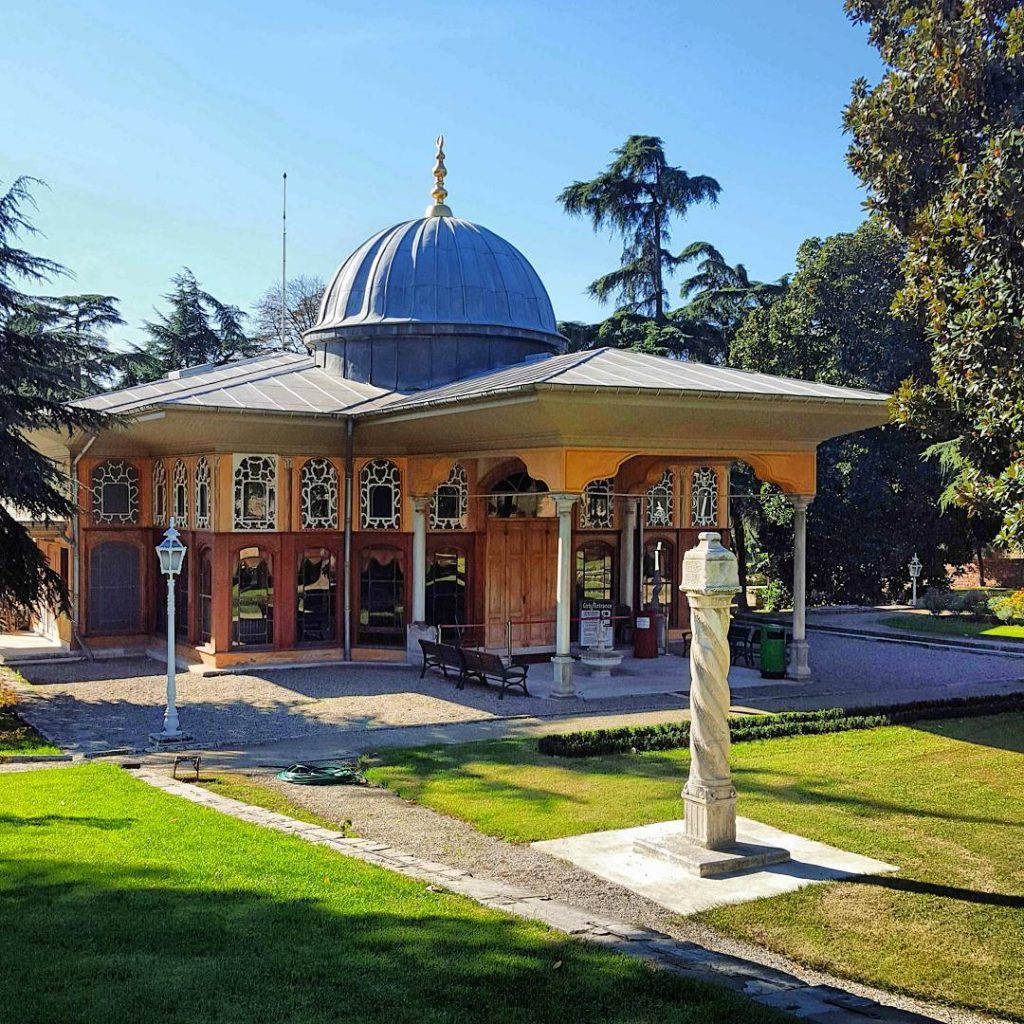
The Aynalikavak Pavilion is one of the most historical pavilions in Istanbul as it was the birthplace of the Ottoman sultan Ibrahim III.
He was one of the Ottoman sultan’s most hysterical figures as he was often called ‘Ibrahim the Mad‘ because of his mental state and ‘insane’ behavior. However, historians believe he was more incompetent than mad.
The pavilion was once the fourth largest palace, known as Tersane Palace, in Istanbul. It is located in the Hasköy neighborhood on the European side of Istanbul.
It was constructed by Sultan Ahmed I and has undergone several renovations over time, but now only the Aynalikavak pavilion remains of the original structure.
The architecture of the pavilion dates back to the 18th century. It has only five rooms and an anteroom, plus an audience hall.
Some highlights of the pavilion are the gold gilded monogram of Sultan Selim III on the ceiling of the Divanhane section, plus engraved poems on the windows from famous poets of the Ottoman era. It is said that the grounds are the resting site of emperors during the Byzantine era.
The pavilion showcases some of the best-preserved Ottoman architecture of the present day.
- Hours: 9am – 5pm, Tuesday – Sunday (Closed on Mondays)
- Address: Keçeci Piri, Donanma Cd., 34440 Beyoğlu, İstanbul, Turkey
9. Beykoz Mecidiye Kasrı Pavilion
The Beykoz Medidye Kasei Pavilion, or Beykoz Palace, is one of the oldest pavilions in Istanbul and was built by an Egyptian Governor, Mehmed Ali Pasha, in 1854.
It was built as a gift to Sultan Abdülmecid, but it was said that he did not show appreciation for it. Instead, his son, Sultan Abdulaziz, frequently visited it.
During the first year of its construction, Mecidiye Pavilion was used as a boarding pavilion, before it turned into daily accommodation and official receptions and events, such as wrestling games and hunting activities.
The Mecidiye Pavilion is located on approximately seventy thousand square meters of land, surrounded by a grove of magnolia, pine, and linden trees.
As one of the first masonry buildings on the Bosphorus, the mansion is the perfect example of grandeur and elegance in Istanbul.
- Hours: 9am – 5pm, Tuesday – Sunday (Closed on Mondays)
- Address: Yalıköy, Beykoz Kasrı, 34820 Beykoz/İstanbul, Turkey
Palaces in Istanbul FAQs
Which is the biggest palace in Istanbul?
The Dolmabahçe Palace is the biggest palace in Istanbul.
How many palaces are there in Istanbul?
Technically there are five palaces, but there are pavilions (mini palaces) that were used as summer residences and guest houses for the Sultans. There are five palaces and four pavilions.
Can you go inside the Istanbul palaces?
Yes, you can go inside all of them. Only some rooms may be off-limits to visitors, but the best rooms are open to tourists.
Final Word on Palaces in Istanbul
So there you have it, nine of the top palaces and pavilions in Istanbul!
From the iconic Dolmabahçe Palace, the largest palace in Turkey, to the tiny and quaint Kucuksu Pavilion, you can see there is a huge array of palaces in Istanbul.
No matter when you visit Istanbul, you had better make sure you add a few of these to your itinerary.
Do you have a favorite palace or pavilion on our list? Let us know in the comments!

